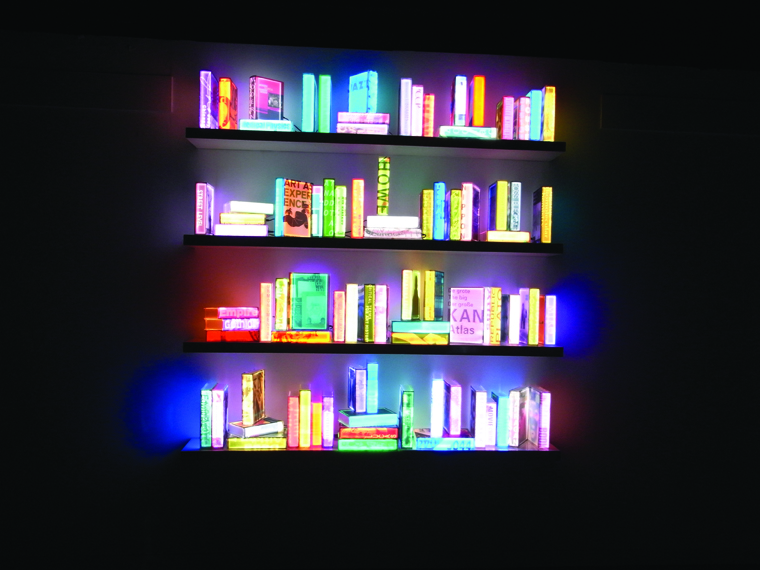Directly above Pittsburgh’s T-Line Station, at the intersection of Wood Street and Liberty Street, is the Wood Street Galleries, one of downtown Pittsburgh’s prized cultural spaces for technology-based art. Since 2000, the organization has exclusively featured work by media artists and has elevated Pittsburgh’s emerging tech-inspired DIY scene into the fine-art realm.
“I would say what sets [us] apart internationally is that we solely focus on new-media artwork,” says Murray Horne, curator for the Wood Street Gallery. “I think that in North America, we are the gallery that focuses on that more than anybody else.”
The Pittsburgh Cultural Trust, an organization that helped to revitalize the city’s cultural landscape, established a cultural district in the downtown area and created the Wood Street Gallery in 1992. The Wood Street Galleries’ four-story building has two floors of gallery space and an additional two stories of office space for burgeoning arts organizations. “We regard those as incubator offices for up-and-coming arts organizations,” Horne says.
 The Wood Street Galleries are currently showing Outer Body / Inner Experience, in which a collection of artists including Lawrence Malstaf, Luc Courchesne, Jim Campbell, Airan Kang, and Matt Stokes have created installations that invoke the viewer’s senses. “It’s all work in which the viewer has to interact with [the work] in order to appreciate the work itself,” Horne says.
The Wood Street Galleries are currently showing Outer Body / Inner Experience, in which a collection of artists including Lawrence Malstaf, Luc Courchesne, Jim Campbell, Airan Kang, and Matt Stokes have created installations that invoke the viewer’s senses. “It’s all work in which the viewer has to interact with [the work] in order to appreciate the work itself,” Horne says.
Malstaf, for example, has created a piece called the “Nemo Observatorium,” which consists of a massive plastic cylinder and a chair that the viewer sits in. Once inside, the viewer presses a button, and tiny Styrofoam pellets begin whirling around the viewer, not once touching him or her.
“You think that you are in the middle of a vortex, or in the middle of a nightmare if you had a bad day at the office,” Horne says.
An installation by Courchesne involves an interactive piece that allows viewers to step onto it and traverse between virtual images simply by activating an iPhone. “Those are [some] examples of Outer Body / Inner Experience — outer body because it’s outside of oneself but inner experience because it demands that you become involved with it,” Horne says. The current exhibit will run through September 12.
This fall, the galleries will also feature an exhibit called Audio Space, which showcases the work of Jem Finer, from The Pogues, and David Rockby. Aside from his music career, Finer has created installation art for more than a decade. One of his most well known pieces, “Longplayer,” is an installation music piece that was commissioned for the city of London to commemorate the new millennium and is designed to play its improvisational piece for the next 1,000 years.
For the Audio Space exhibit, the Wood Street Galleries will stream the sounds of “Longplayer” directly from London. Finer will also be in town to play a performance with some local musicians. Rockby will be contributing a piece called “A Very Nervous System,” which allows viewers to interact with his work using motion to activate sounds. “In other words, when the person walks in, no matter how they configure their body, there will be an oral response to the configuration,” Rockby says.
Pittsburgh has a long art/tech tradition that the Wood Street Galleries plan to continue fostering for years to come. “I think that there is a really strong relationship with technology-based artwork that has been promoted for years now, so I think that it’s a good scene and [that there’s] a number of people working in it,” Horne says. “I think that it permeates the whole city.”

